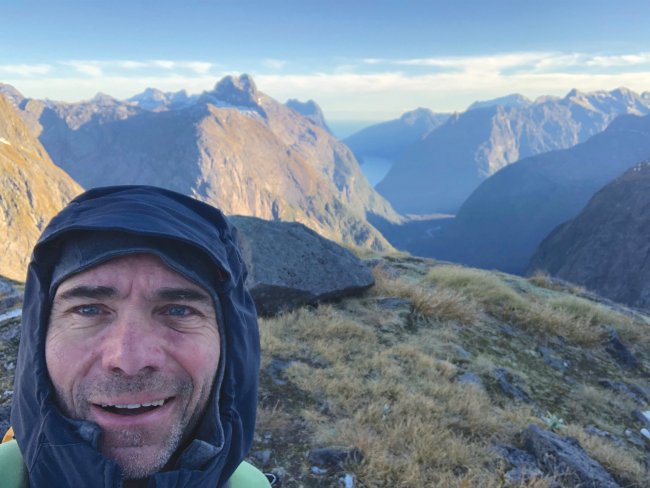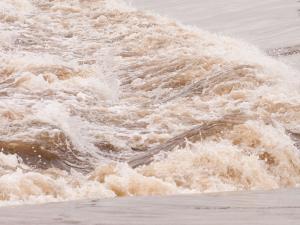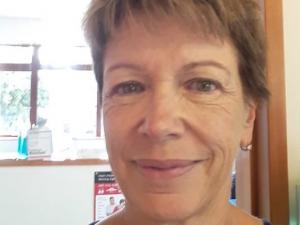Respiratory physician Lutz Beckert considers chronic obstructive pulmonary disease management, including the prevention of COPD, the importance of smoking cessation and pulmonary rehabilitation, and the lifesaving potential of addressing treatable traits. He also discusses the logic of inhaler therapy, moving from single therapy to dual and triple therapy when indicated, as well as other aspects of management
In the thick of a changing climate - Locum sees vulnerability of rural health services
In the thick of a changing climate - Locum sees vulnerability of rural health services

A run of weather-induced crises has struck New Zealand in recent times and will only increase, says a locum doctor working in the thick of it. Virginia McMillan reports
These events are not isolated, and they’re not going away but becoming much more common and severe
Specialist GP Robin Barraclough’s patient had been jolted back to life three times by paramedics and was stuck in Kaitaia Hospital, 300km from a coronary care unit.
Roads had closed and air transport was out, amid a swathe of rainstorms and floods.
The patient finally reached Auckland City Hospital by rescue chopper the next day, a far-from-ideal 16 hours after having a heart attack.
It was mid-July 2020, after two days of rainfall, up to 45mm an hour in various parts of Northland.
Rivers reached record heights and the northern Whangārei harbour catchment recorded a “one in 100 years” flood.
Dr Barraclough is aiming to qualify as a rural hospital doctor as he spends most of his working life at small hospitals such as Kaitaia, Timaru, Thames and Westport.
He has been caught up in many climate-related events and says rural hospitals are ill-prepared for them.
“I am not sure the public realises how thin some of the threads are that make our rural regions’ [healthcare] work,” Dr Barraclough says.
That night in Kaitaia Hospital, he spent 12 hours mostly with the coronary patient while also being the only doctor for the emergency department. Another patient had urosepsis; the main ward held 20 fairly stable other patients.
“It didn’t matter how sick they were, they weren’t going anywhere,” he says.
Whangārei Hospital has since opened a new cardiac catheter lab, so a rush to Auckland is largely unnecessary. The trip to Whangārei is half as long at about 150km.
But Dr Barraclough says it’s heartbreaking in the regions when you send vulnerable patients on long journeys because the specialist facilities and staff aren’t available.
Emergency events just magnify the challenges. Climate change is upon us: “These events are not isolated, and they’re not going away but becoming much more common and severe...I don’t think we are prepared, or preparing, either from an infrastructure point of view – the roading network – or the healthcare network.
“We are not considering what happens if that helicopter can’t get in or that ambo can’t get out. Everything is still on the ‘just in time’ model.”
On Christmas Eve 2020, Dr Barraclough was working at Westport Hospital when a massive slip closed the main road south of the township. Three of his patients would normally have gone by ambulance straight down the coast to Greymouth Hospital; more than three hours was added to their journeys when an inland route via Inangahua and Reefton was the only way through.
One night in Timaru Hospital ED a year ago, no patients could be sent urgently to Christchurch. Persistent heavy rain had stopped all air travel and taken out Canterbury roads as well as a bridge on the Ashburton River. It was that river’s biggest flood on record.
Meanwhile, at Thames Hospital, Dr Barraclough found during a week of high temperatures last December that two or three patients a day were presenting with minor heart attacks.
He suspects COVID-19 had delayed some of them in presenting for regular general practice check-ups. “Often these people with cardiovascular disease are only just managing; all it takes is a week of really hot weather to tip them over the edge.”
Dr Barraclough wants to see clinicians trained for rural areas, and with the resilience required for “when severe things happen”. He says he’s ready for these events only because he spent years in emergency medicine before training as a GP.
“In rural, there is no urgent care and it’s not always easy to get to the hospital, and the rural hospital doctor might be busy. So a good rural GP has to wear many hats.”
A wellness model of care is needed, designed to keep people well rather than treat them after they get ill – which is very carbon-intensive, he says.
We're publishing this article as a FREE READ so it is FREE to read and EASY to share more widely. Please support us and the hard work of our journalists by clicking here and subscribing to our publication and website









![Barbara Fountain, editor of New Zealand Doctor Rata Aotearoa, and Paul Hutchison, GP and senior medical clinician at Tāmaki Health [Image: Simon Maude]](/sites/default/files/styles/thumbnail_cropped_100/public/2025-03/Barbara%20Fountain%2C%20editor%20of%20New%20Zealand%20Doctor%20Rata%20Aotearoa%2C%20and%20Paul%20Hutchison%2C%20GP%20and%20senior%20medical%20clinician%20at%20T%C4%81maki%20Health%20CR%20Simon%20Maude.jpg?itok=-HbQ1EYA)
![Lori Peters, NP and advanced health improvement practitioner at Mahitahi Hauora, and Jasper Nacilla, NP at The Terrace Medical Centre in Wellington [Image: Simon Maude]](/sites/default/files/styles/thumbnail_cropped_100/public/2025-03/2.%20Lori%20Peters%2C%20NP%20and%20advanced%20HIP%20at%20Mahitahi%20Hauora%2C%20and%20Jasper%20Nacilla%2C%20NP%20at%20The%20Terrace%20Medical%20Centre%20in%20Wellington%20CR%20Simon%20Maude.jpg?itok=sUfbsSF1)
![Ministry of Social Development health and disability coordinator Liz Williams, regional health advisors Mary Mojel and Larah Takarangi, and health and disability coordinators Rebecca Staunton and Myint Than Htut [Image: Simon Maude]](/sites/default/files/styles/thumbnail_cropped_100/public/2025-03/3.%20Ministry%20of%20Social%20Development%27s%20Liz%20Williams%2C%20Mary%20Mojel%2C%20Larah%20Takarangi%2C%20Rebecca%20Staunton%20and%20Myint%20Than%20Htut%20CR%20Simon%20Maude.jpg?itok=9ceOujzC)
![Locum GP Helen Fisher, with Te Kuiti Medical Centre NP Bridget Woodney [Image: Simon Maude]](/sites/default/files/styles/thumbnail_cropped_100/public/2025-03/4.%20Locum%20GP%20Helen%20Fisher%2C%20with%20Te%20Kuiti%20Medical%20Centre%20NP%20Bridget%20Woodney%20CR%20Simon%20Maude.jpg?itok=TJeODetm)
![Ruby Faulkner, GPEP2, with David Small, GPEP3 from The Doctors Greenmeadows in Napier [Image: Simon Maude]](/sites/default/files/styles/thumbnail_cropped_100/public/2025-03/5.%20Ruby%20Faulkner%2C%20GPEP2%2C%20with%20David%20Small%2C%20GPEP3%20from%20The%20Doctors%20Greenmeadows%20in%20Napier%20CR%20Simon%20Maude.jpg?itok=B0u4wsIs)
![Rochelle Langton and Libby Thomas, marketing advisors at the Medical Protection Society [Image: Simon Maude]](/sites/default/files/styles/thumbnail_cropped_100/public/2025-03/6.%20Rochelle%20Langton%20and%20Libby%20Thomas%2C%20marketing%20advisors%20at%20the%20Medical%20Protection%20Society%20CR%20Simon%20Maude.jpg?itok=r52_Cf74)
![Specialist GP Lucy Gibberd, medical advisor at MPS, and Zara Bolam, urgent-care specialist at The Nest Health Centre in Inglewood [Image: Simon Maude]](/sites/default/files/styles/thumbnail_cropped_100/public/2025-03/7.%20Specialist%20GP%20Lucy%20Gibberd%2C%20medical%20advisor%20at%20MPS%2C%20and%20Zara%20Bolam%2C%20urgent-care%20specialist%20at%20The%20Nest%20Health%20Centre%20in%20Inglewood%20CR%20Simon%20Maude.jpg?itok=z8eVoBU3)
![Olivia Blackmore and Trudee Sharp, NPs at Gore Health Centre, and Gaylene Hastie, NP at Queenstown Medical Centre [Image: Simon Maude]](/sites/default/files/styles/thumbnail_cropped_100/public/2025-03/8.%20Olivia%20Blackmore%20and%20Trudee%20Sharp%2C%20NPs%20at%20Gore%20Health%20Centre%2C%20and%20Gaylene%20Hastie%2C%20NP%20at%20Queenstown%20Medical%20Centre%20CR%20Simon%20Maude.jpg?itok=Z6u9d0XH)
![Mary Toloa, specialist GP at Porirua and Union Community Health Service in Wellington, Mara Coler, clinical pharmacist at Tū Ora Compass Health, and Bhavna Mistry, specialist GP at Porirua and Union Community Health Service [Image: Simon Maude]](/sites/default/files/styles/thumbnail_cropped_100/public/2025-03/9.%20Mary%20Toloa%2C%20Porirua%20and%20Union%20Community%20Health%20Service%20in%20Wellington%2C%20Mara%20Coler%2C%20T%C5%AB%20Ora%20Compass%20Health%2C%20and%20Bhavna%20Mistry%2C%20PUCHS%20CR%20Simon%20Maude.jpg?itok=kpChr0cc)